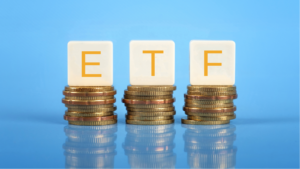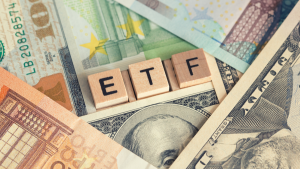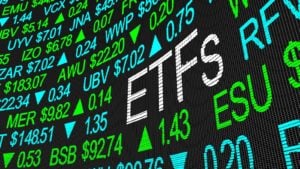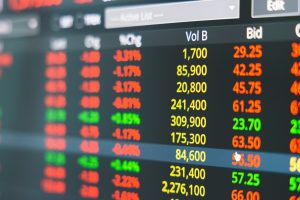
While the buy-and-hold strategy makes the most intuitive sense, it’s boring, which invariably leads curious investors down the path toward inverse ETFs. Just like any other exchange-traded fund, these bear trades represent a basket of securities under a single umbrella. However, the main difference is that when the underlying index falls, your holdings rise. Of course, the opposite is also true; hence the risks.
Still, inverse ETFs offer myriad advantages or conveniences. Some of them are as follows:
- Convenience: You just buy the bear fund and don’t have to worry about complex mechanisms.
- Mitigation: You only lose what you put in which isn’t always the case for other short trades.
- Access: Both standard and inverse ETFs can be traded through a regular brokerage account.
At the same time, there’s no such thing as risk-free investments. Below are some dangers to consider:
- Compounding: Inverse ETFs undergo a daily rebalancing, forcing a short-term mentality.
- Correlation: The inverse relationship of bear funds isn’t always perfectly aligned.
- Counterparty: Some inverse ETFs may use derivatives that countering parties may default on.
To be sure, it’s a risky endeavor. However, because it’s one of the easiest ways to short the market, these inverse ETFs could see contrarian demand.
ProShares Short QQQ (PSQ)

One of the most popular inverse ETFs based on its average trading volume of 31.62 million units, ProShares Short QQQ (NYSEARCA:PSQ) seeks daily investment results before fees and expenses that correspond to the 1X inverse of the daily performance of the Nasdaq 100 index. Of course, the technology sector has been on fire, which means that PSQ represents a clear laggard.
Since the beginning of the year, PSQ dropped almost 31% of market value. In the past five years, it slipped more than 69%, thus reinforcing the short-term nature of inverse ETFs. Remember, this is about getting in quickly and getting out with similar urgency.
Fundamentally, though, the PSQ could be intriguing because of the natural ebb and flow of the markets. Specifically, the target index began popping higher in late October, likely on speculation that the Federal Reserve could cut interest rates next year. However, if that doesn’t pan out, the Nasdaq 100 could be due for a correction, one that you could benefit from.
Direxion Daily S&P 500 Bear 1X Shares (SPDN)

Another popular example of inverse ETFs, the Direxion Daily S&P 500 Bear 1X Shares (NYSEARCA:SPDN) features average trading volume of 7.44 million. According to its prospectus, the SPDN attempts to track 100% of the opposite of the daily performance of the S&P 500 index. Notably, this fund invests at least 80% of its net assets in swap agreements, futures contracts, short positions or other financial instruments.
Stated differently, you’ve got to watch for counterparty risk among other possible pitfalls. For now, the immediate challenge centers on the robust performance of the benchmark index. With the target index up 19% since the start of the year, it’s a bit merciful that the SPDN is down “only” 15%.
Still, an argument exists that – based on the relative strength indicator (RSI) – the S&P 500 rides in overbought territory. Yes, intense speculation surrounds the concept that the Fed may cut rates. However, inflation remains stubbornly high so I don’t see this as a foregone conclusion. Therefore, this inverse ETF could be intriguing.
ProShares UltraShort Financials (SKF)

Dialing up the risk factor significantly, ProShares UltraShort Financials (NYSEARCA:SKF) corresponds to two times the inverse of the daily performance of the S&P Financial Select Sector Index. Because we’re dealing with 2X leverage, the compounding effect becomes even “worse” when the fund rebalancing materializes. Basically, the percentage-based ebb and flow over time erodes your holdings on a net basis.
To give you an idea of how speculative the SKF is, consider the underlying index. Since the January opener, the S&P Financial Select Sector gained nearly 4%. In sharp contrast, this bear fund dropped more than 14% of market value. That’s a severe misalignment between the losses that should be printed versus what we actually see.
Still, the fundamental case for SKF centers on the lingering concerns related to the financial sector. As The Hill stated last month, the regional banking crisis is still not over. Timed correctly, the SKF could be lucrative contrarian trade among inverse ETFs.
ProShares UltraShort Semiconductors (SSG)

When it comes to inverse ETFs that could blow up in your face, ProShares UltraShort Semiconductors (NYSEARCA:SSG) suffers from two clear disadvantages. First, the bear fund corresponds to two times the inverse of the daily performance of the Dow Jones U.S. Semiconductors index. As we just saw, leveraged ETFs can become discombobulated from their “true” correlations.
Second, the semiconductor space represents one of the hottest ecosystems of the year. With enterprises like Nvidia (NASDAQ:NVDA) storming higher due to the burgeoning development of artificial intelligence and machine learning, it’s only the most intrepid of contrarians that would even consider betting against the sector. Then again, the audacious nature of the speculation could possibly yield dramatic returns.
Interestingly, the target semiconductor index peaked in the second half of November. Since then, the benchmark has slipped conspicuously. If traders anticipate that the index could continue its decline, the SSG may be enticing.
Keep in mind that in the trailing five sessions, SSG gained nearly 7%.
Direxion Daily S&P 500 Bear 3X Shares (SPXS)

Dialing up the risk-reward profile to the maximum level, the Direxion Daily S&P 500 Bear 3X Shares (NYSE:SPXS) should not be entered into lightly. If regular inverse ETFs require a quick-in, quick-out approach, you need to be that much more vigilant with SPXS. As the name of the fund suggests, the platform attempts to deliver the 3X inverse of the S&P 500 index.
Another factor to consider is that per its prospectus, the SPXS under normal circumstances invests at least 80% of its net assets in swap agreements, futures contracts, short positions or other financial instruments. Therefore, the counterparty risk is extremely heightened with the Direxion Daily S&P 500 Bear. Also, keep in mind that with an expense ratio of 1.08%, it’s not cheap.
To give you an understanding of the dangers of triple leverage, the benchmark index gained 19% year-to-date. In sharp contrast, the SPXS cratered to the tune of 41%. Again, quick in, quick out.
Still, the benchmark index does look a little stretched. If the stars align, SPXS could be a big winner.
Direxion Daily FTSE China Bear 3X Shares (YANG)

If we’re going to be cynical with inverse ETFs, we might as well consider shorting global equities, particularly from competing nations. For that, we have the Direxion Daily FTSE China Bear 3X Shares (NYSEARCA:YANG). According to its prospectus, YANG seeks 300% of the opposite of the daily performance of the FTSE China 50 index.
Now, for some risk awareness. Under normal circumstances, YANG invests at least 80% of its net assets in swap agreements, futures contracts and other instruments that carry counterparty risk. Fundamentally, though, the case for YANG is appealing because of fading economic conditions in the world’s second-largest economy. Per Foreign Affairs, a key negative catalyst stemmed from overinvestment in property and infrastructure.
Sure enough, YANG popped up about 34% since the start of the year. Further, as more questions rise regarding Chinese economic stability, the bear fund could continue its ascent. Still, with an expense ratio of 1.08% – the category average being 1.05% – caution is warranted.
ProShares UltraPro Short Russell 2000 (SRTY)

Finally, closing out this list of inverse ETFs is the ProShares UltraPro Short Russell 2000 (NYSEARCA:SRTY). According to its prospectus, the SRTY seeks daily investment results that correspond to three times the inverse of the daily performance of the Russell 2000 index. Because the underlying canvas targets small-capitalization companies, both big risks and big reward potential cover the market idea.
To be sure, those that decide to dive into SRTY will be taking on extreme dangers. Right now, the Russell 2000 is up around 6% since the January opener. On the other end of the aisle, the UltraPro Short ETF is down 26%. In other words, when you’re trading 3X inverse ETFs and the underlying index moves marginally against your position, your portfolio could implode.
Still, the opposite could be true. For example, if the Fed decides to forego interest rate cuts and instead raises them to combat stubbornly high inflation, the equities sector could suffer badly. So, it really depends on your convictions.
On the date of publication, Josh Enomoto did not have (either directly or indirectly) any positions in the securities mentioned in this article. The opinions expressed in this article are those of the writer, subject to the InvestorPlace.com Publishing Guidelines.





